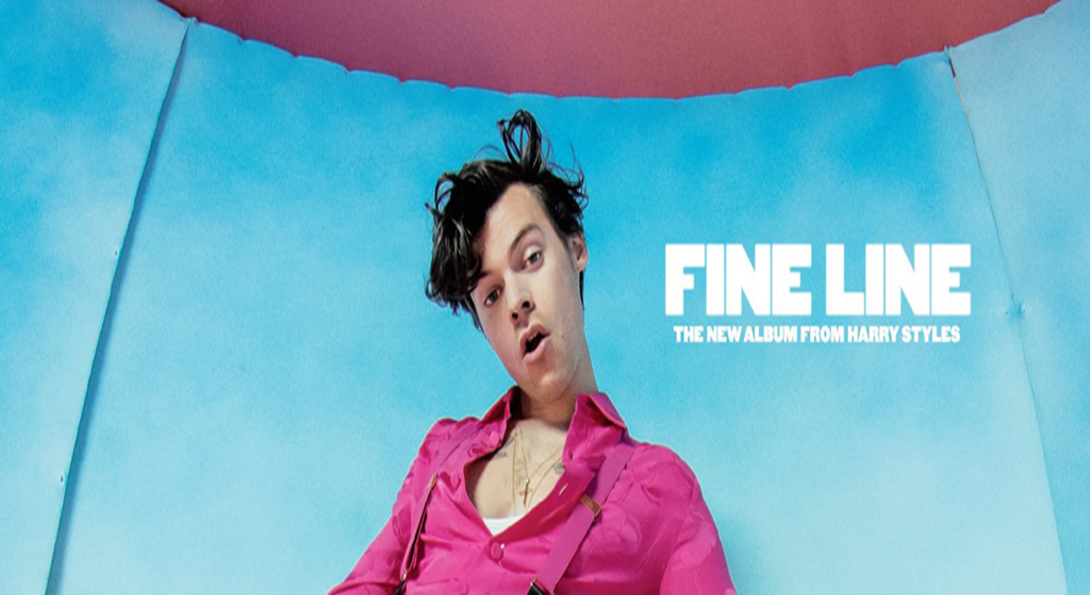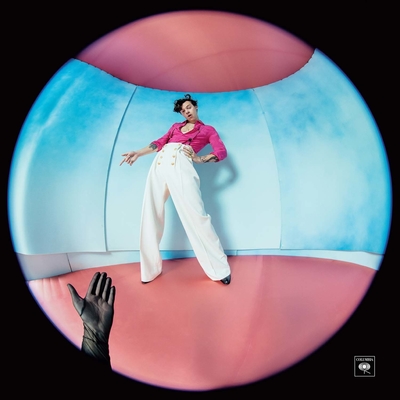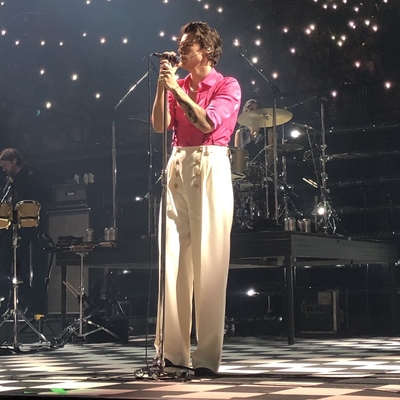Harry Styles Just Released the Album of the Decade

★ ★ ★ ★ ★
Declare December 13th a national holiday because Harry Styles just released his highly anticipated sophomore album, Fine Line. Ranked the 23rd album of 2019 eight days before it even came out, Rolling Stone Magazine described the album as "... a breakup meditation bathed in the bright light of personal clarity." And they're right. With lead single "Lights Up," it's easy to see what Rolling Stone means by personal clarity when Styles sings, "All the lights couldn't put out the dark/Runnin' through my heart/Lights up and they know who you are/Know who you are/Do you know who you are?"
Although Rolling Stone ranked Fine Line as the 23rd album of 2019, it should genuinely be considered as the album of the decade. In Styles' first album, we heard a collection of songs written by a young man fresh out of a boyband trying to find his way in the solo music industry. With Harry Styles, we can hear Styles playing it safe by putting out music that sounded almost like what One Direction could have been if they stayed together for another album or two. That album is heavily influenced by British rock, and singer-songwriter folk music. With Fine Line however, from beginning to end, we hear an actual album of songs that have similar styles and themes to one another. It's still rock music, but more flamboyant and extra. It feels more free and authentic.
Harry Styles Just Released the Album of the Decade Heading link

Starting with Golden, it feels as if Styles put that song as the first track on the album on purpose. It serves as a perfect transition piece between his self-titled and new albums. The actual music is very reminiscent of his previous work, with a proper drum set playing in the background and mini guitar solos in the latter half of the song. However, the harmonies in his voice are very new to all of us. Watermelon Sugar, however, sounds nothing like anything Styles has released before. With the addition of horns in the chorus, he enters a new territory similar to that of the music released in the ’70s. You can almost feel the funk exuding from the melody as he sings about a certain high that he can only get from having “watermelon sugar.”
Then we move on to Adore You, which is essentially a marriage of the previous two songs. With the song comes an almost eight long music video — no, a movie — recanting the story of a boy in love with a fish on the frown-shape island of Eroda, all of which is narrated by Spanish artist Rosalía. In the video, he screams into a jar and throws it out into the ocean, releasing his frustrations. But if you listen at the right second, you can hear those screams, now turned into a beautiful ambiance, with the rest of the background vocals. And unlike any other thing Styles has ever put out before, he gives us Lights Up, which was also his lead single for the album. It’s a song full of existentialism, with the singer constantly asking us if we know who we are, and on top of that, he’s asking us to be our freest and truest selves.
Cherry starts off as the first of the two saddest songs on the album. The song’s purpose is to send a message to his ex-girlfriend, Camille Rowe, who coincidentally makes an appearance at the end of the song via voicemail. In the song, Styles painfully sings about his former lover moving on to someone new, but not being able to get over it. He even goes so far as to say that she still influences the way that he dresses despite the two no longer being together. While again in Falling, Styles poses the idea of existentialism, but from a different perspective this time. He asks, “What if I’m someone I don’t want around?” to a soft piano.
Harry Styles Just Released the Album of the Decade Heading link

Styles takes a major shift in stylistic choices in songs like To Be So Lonely. This song sounds more like a conversation than a belting tune which is the style of song that he normally associates himself with. Calling himself “an arrogant son of a b*tch,” Styles reveals that it’s difficult for him to put his pride aside. The whole song feels as if it’s a denial-like drunk phone call in response to pouring his heart out during his previous two tracks. Even in She, despite the crooner voice sounding similar to past tracks, it’s the emphasis of the electric guitar in the background that makes this song stand out from the other songs on the album. Over six minutes long, it feels as if almost half of the song is just guitar solos, played by Styles’ guitarist Mitch Rowland. “Mitch played that guitar when he was a little, ah, influenced,” Styles says. “Well, he was on mushrooms, we all were. We had no idea what we were doing. We forgot all about that track, then went back later and loved it. But Mitch had no idea what he did on guitar that night, so he had to learn it all over from the track.”
Of all of the songs though, Sunflower Vol. 6 is by far the most ambiguous title of a song Styles has released to date. After listening to it, one could only beg to ask the question “where are volumes one through five?” And although some wouldn’t consider it single-worthy, it still is a very calming and relaxing tune, with a sort of beachy flair to it. With synths coinciding with surf guitar riffs, this song is perfect for a drive down the highway or a cool day at the beach. The same goes for Canyon Moon. Influenced by the album Blue by Joni Mitchell, the song is probably the closest thing to his first album, Harry Styles. While he described it as a “Crosby, Stills, and Nash [song] on steroids.” The track is Styles’ good friend Stevie Nicks’s personal favorite.
The second to last track is Treat People With Kindness, a phrase Styles is known to say often but now turned into a song. Swarmed with harmonies from Sarah Jones and Clare Uchima, Styles’ drummer and keyboardist, Styles preaches to his audience that if we just practice a little kindness, it just might make us feel good. The feeling of the song alone exudes the same feelings you get when listening to classic Queen and Bowie music. And then to end Fine Line is Fine Line, the song the album is named after. At six minutes and 18 songs long, it’s in a league of its own. It’s not a song; it’s an epic. A little over halfway through the song, strings jump in with Styles repeating “We’ll be alright/We’ll be a fine line.” Next, you start to hear a snare drum, which in itself feels almost like a call to action for something. Then, you hear this intense band of horns as the song crescendos and gives way into something greater and freer than we believe it to be. This song takes you on a condensed journey of the album. If you needed a song to make you a believer in Styles’ music, this is the one.